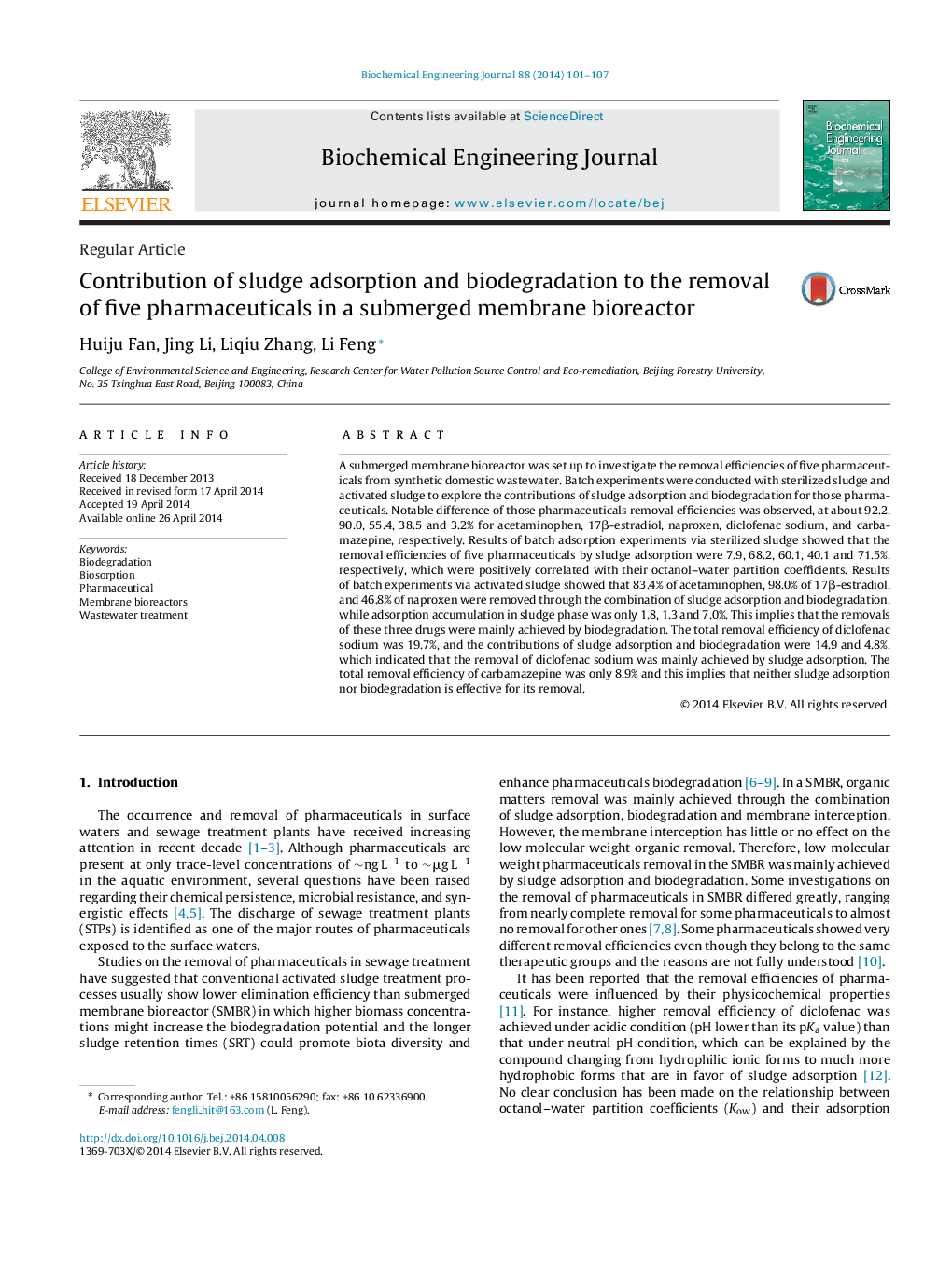| Article ID | Journal | Published Year | Pages | File Type |
|---|---|---|---|---|
| 3159 | Biochemical Engineering Journal | 2014 | 7 Pages |
•Five pharmaceuticals showed notable different removal efficiency in a submerged membrane bioreactor.•Sludge adsorption of pharmaceuticals influenced by positive/negative charge and the hydrophobic/hydrophilic characteristics.•Functional groups of pharmaceuticals take effect on their biodegradation.•Contribution of sludge adsorption and biodegradation for pharmaceuticals removal was obtained.
A submerged membrane bioreactor was set up to investigate the removal efficiencies of five pharmaceuticals from synthetic domestic wastewater. Batch experiments were conducted with sterilized sludge and activated sludge to explore the contributions of sludge adsorption and biodegradation for those pharmaceuticals. Notable difference of those pharmaceuticals removal efficiencies was observed, at about 92.2, 90.0, 55.4, 38.5 and 3.2% for acetaminophen, 17β-estradiol, naproxen, diclofenac sodium, and carbamazepine, respectively. Results of batch adsorption experiments via sterilized sludge showed that the removal efficiencies of five pharmaceuticals by sludge adsorption were 7.9, 68.2, 60.1, 40.1 and 71.5%, respectively, which were positively correlated with their octanol–water partition coefficients. Results of batch experiments via activated sludge showed that 83.4% of acetaminophen, 98.0% of 17β-estradiol, and 46.8% of naproxen were removed through the combination of sludge adsorption and biodegradation, while adsorption accumulation in sludge phase was only 1.8, 1.3 and 7.0%. This implies that the removals of these three drugs were mainly achieved by biodegradation. The total removal efficiency of diclofenac sodium was 19.7%, and the contributions of sludge adsorption and biodegradation were 14.9 and 4.8%, which indicated that the removal of diclofenac sodium was mainly achieved by sludge adsorption. The total removal efficiency of carbamazepine was only 8.9% and this implies that neither sludge adsorption nor biodegradation is effective for its removal.
